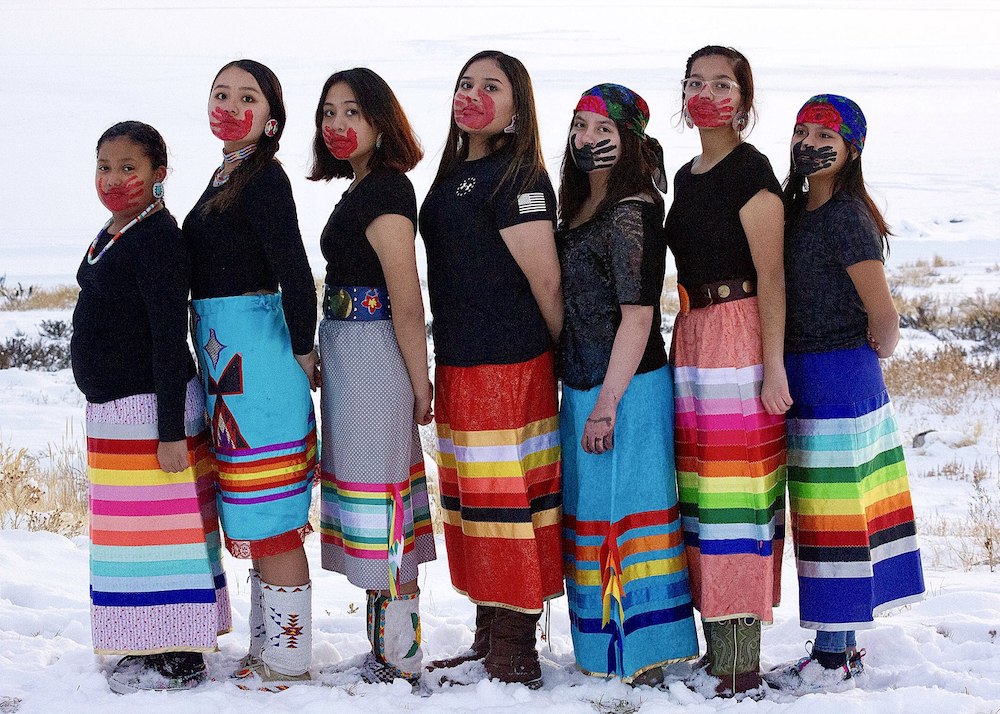
- Details
- By Levi Rickert
OPINION. In July, Gabby Petito, 22, began a four-month trip across the country with her fiancé to visit national parks along the way. By September 1, something had obviously gone amiss when Petito’s fiancé returned to his home in Florida without her. Ten days later, Petito’s mother filed a missing person report.
Since the couple were last seen together by witnesses in Wyoming’s Grand Teton National Park, the missing report prompted an extensive search effort by the FBI Denver Field Office, its Wyoming Resident Agencies, the National Park Service, U.S. Forest Service, Teton County Sheriff’s Office, Teton County Search and Rescue, and Jackson Police Department.
Want more Native News? Get the free daily newsletter today.
Last Sunday, human remains believed to be those of Petito were discovered in a remote area of the Grand Teton National Park. On Wednesday, September 22, an autopsy positively identified Petito’s remains.
The events described above may already be familiar to you because, for the last several weeks, Petito’s disappearance and death have drawn national media attention.
Her death was tragic. So are the stories of hundreds of Indigenous people who have gone missing and murdered in the state of Wyoming and across Indian Country.
According to the State of Wyoming’s Missing and Murdered Indigenous People Task Force Report, at least 710 Indigenous people disappeared in Wyoming from 2011 to 2020. Of those who disappeared, 57 percent were females.
There are some other key findings in the Wyoming report.
During a 20-year period, from 2000 and 2020, there were 105 Indigenous (34 females, 71 males) people who were victims of homicide. Between 2010 and 2019, the homicide rate per 100,000 Indigenous people was 26.8, eight times higher than the homicide rate for White people. The homicide rate for Indigenous females was 15.3 per 100,000, 6.4 times higher than the homicide rate for White females.
That number may be higher than what has been reported, according to Emily Grant, a research scientist at the Wyoming Survey and Analysis Center. The data could be off because of misclassification of victims by coroners, Grant said in a statement in January 2021.
The Wyoming report was not charitable to media coverage of Indigenous homicide victims. Only 30 percent of Indigenous homicide victims had newspaper media coverage, as compared to 51 percent of White homicide victims. Indigenous female homicide victims had the least amount of newspaper media coverage (18 percent).
Help us tell important Native stories that get overlooked by other media.
The media’s portrayal of Indigenous homicide victims by newspapers was also more likely to contain violent language, portray the victim in a negative light, and provide less information as compared to articles about White homicide victims.
The national media coverage of Gabby Petito’s disappearance and death sheds light on how biased the media is when it comes to coverage of missing and murdered women of color.
“Missing White Woman Syndrome” is a term that has reemerged this past week. It was coined in 2004 by the late PBS anchor Gwen Ifill, who was Black.
“If there is a missing white woman, we are going to cover that, every day,” Ifill said at the time.
Ifill’s theory was examined in a 2016 Northwestern Law study called “Missing White Woman Syndrome: An Empirical Analysis of Race and Gender Disparities in Online News Coverage of Missing Persons.” In the study, four national and local news outlets found that Black people were significantly underrepresented in coverage of missing persons compared to their White counterparts.
“The findings of this study remain persuasive. The race and gender disparities are evident across multiple sources and using multiple methods of analysis…The results of the analyses here help confirm that Missing White Woman Syndrome is a real, empirical phenomenon,” writes researcher Zach Sommers, who authored the study.
It’s worth noting: The Northwestern study did not analyze media coverage of the epidemic of missing and murdered Indigenous people.
Even so, the recent Petito coverage amplifies what we already know as American Indians: While attractive White women who go missing make the front page of newspapers, missing American Indian women don’t usually make any page of the paper, much less radio or TV newscasts.
Their disappearances and deaths are those of our grandmothers, mothers, aunts, sisters, cousins and friends. They deserve the same amount of attention as their White counterparts.
More Stories Like This
Native American Voting Rights Act Needed to Protect Our Sacred Right to VoteThe Covid-19 Pandemic is Not Over; The Death Toll Tells the Story
Secretary Haaland, From One Indigenous Mother to Another: If Not Now, When Will You Reverse Trump on Wolves?
Chief Hoskin: Interstate Partnership Will Drive Innovation, Economy
Native Perspective. Native Voices. Native News.
We launched Native News Online because the mainstream media often overlooks news that is important is Native people. We believe that everyone in Indian Country deserves equal access to news and commentary pertaining to them, their relatives and their communities. That's why the story you’ve just finished was free — and we want to keep it that way, for all readers. We hope you'll consider making a donation to support our efforts so that we can continue publishing more stories that make a difference to Native people, whether they live on or off the reservation. Your donation will help us keep producing quality journalism and elevating Indigenous voices. Any contribution of any amount — big or small — gives us a better, stronger future and allows us to remain a force for change. Donate to Native News Online today and support independent Indigenous journalism. Thank you.
"Media" - Google News
September 26, 2021 at 10:32PM
https://ift.tt/2XTfKfG
The Media Needs to Get Past the “Missing White Woman Syndrome” - nativenewsonline.net
"Media" - Google News
https://ift.tt/2ybSA8a
https://ift.tt/2WhuDnP
Bagikan Berita Ini















0 Response to "The Media Needs to Get Past the “Missing White Woman Syndrome” - nativenewsonline.net"
Post a Comment